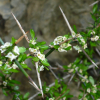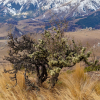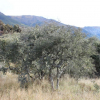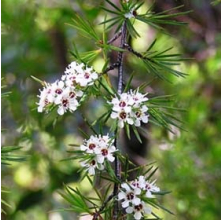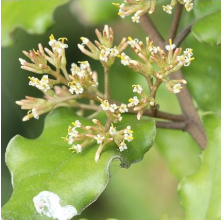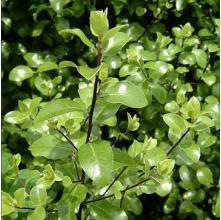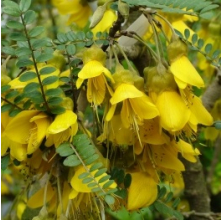Discaria toumatou
(Matagouri)
Discaria toumatou
(Matagouri)
Prices:
| Each | 20 or more | |
|---|---|---|
| 2.5L Pot | $9.50 | $9.00 |
Details:
| Type: | Tree |
| Growth Rate: | Slow |
| Mature Height: | 5 m |
| Mature Width: | 3 m |
| Site Condition: | Exposed, Frost Tolerant, Heavy Soil, Sandy Soil |
| Sun: | Full Sun |
| Drainage: | Dry |
| Frosts: | Hardy |
| Features: | Drought tolerant. Suitable for hedging or shelter. Attractive to birds, insects, lizards and bees. Rongoa. Flower colour: White. Foliage colour: Green. Fruit colour: Orange. Native. Suitable restoration species. |
Discaria toumatou, commonly called Matagouri, is a tangle-branched, extremely thorny, divaricating shrub or small tree up to five metres tall. It has small leathery leaves close to the thorns, which are only abundant in spring or the shade. The flowers are tiny and white with no petals. It is the only New Zealand native plant that has thorns. Nitrogen-fixer. Common in dry shrublands of the eastern South Island.
It is most common in tussock grassland, stony areas and river beds. It is common in the eastern South Island, and found in a few coastal localities in the North Island south from the mouth of the Waikato River. As with other Discaria species it fixes nitrogen from the atmosphere with the help of symbiotic bacteria of the genus Frankia in its roots. It often grows in association with mingimingi (Coprosma propinqua), porcupine shrub (Melicytus alpinus, an alpine mahoe) and native brooms (Carmichaelia species). Seeds are dispersed by ballistic projection and water.
Matagouri plays an important ecological role in providing habitat and food sources for various native bird species, including silvereyes and bellbirds. The dense, spiny branches offer protection from predators and nesting sites for birds. Matagouri also helps stabilise the soil and prevent erosion in exposed and fragile environments.
As a native plant matagouri has complete protection on public conservation land and a degree of protection on private land under the Resource Management Act 1991. In a notable case a 400 ha area of matagouri forest, including trees that may have been 150 years old, was illegally sprayed at the head of Lake Sumner in 2001.
Habitat: Found in dry riverbeds, open rocky places and sand dunes from coastal to subalpine.
Flowering: Spring - Summer [October - January]
Fruiting: Summer [December - March]
Plant Calendar:
| Jan | Feb | Mar | Apr | May | Jun | Jul | Aug | Sep | Oct | Nov | Dec |
|---|---|---|---|---|---|---|---|---|---|---|---|
| FSN | FS | FS | N | N | FSN |
| Flowering | Fruiting | Both | |
| Key |
| Fruit | Seed | Nectar | |
| Key | F | S | N |

